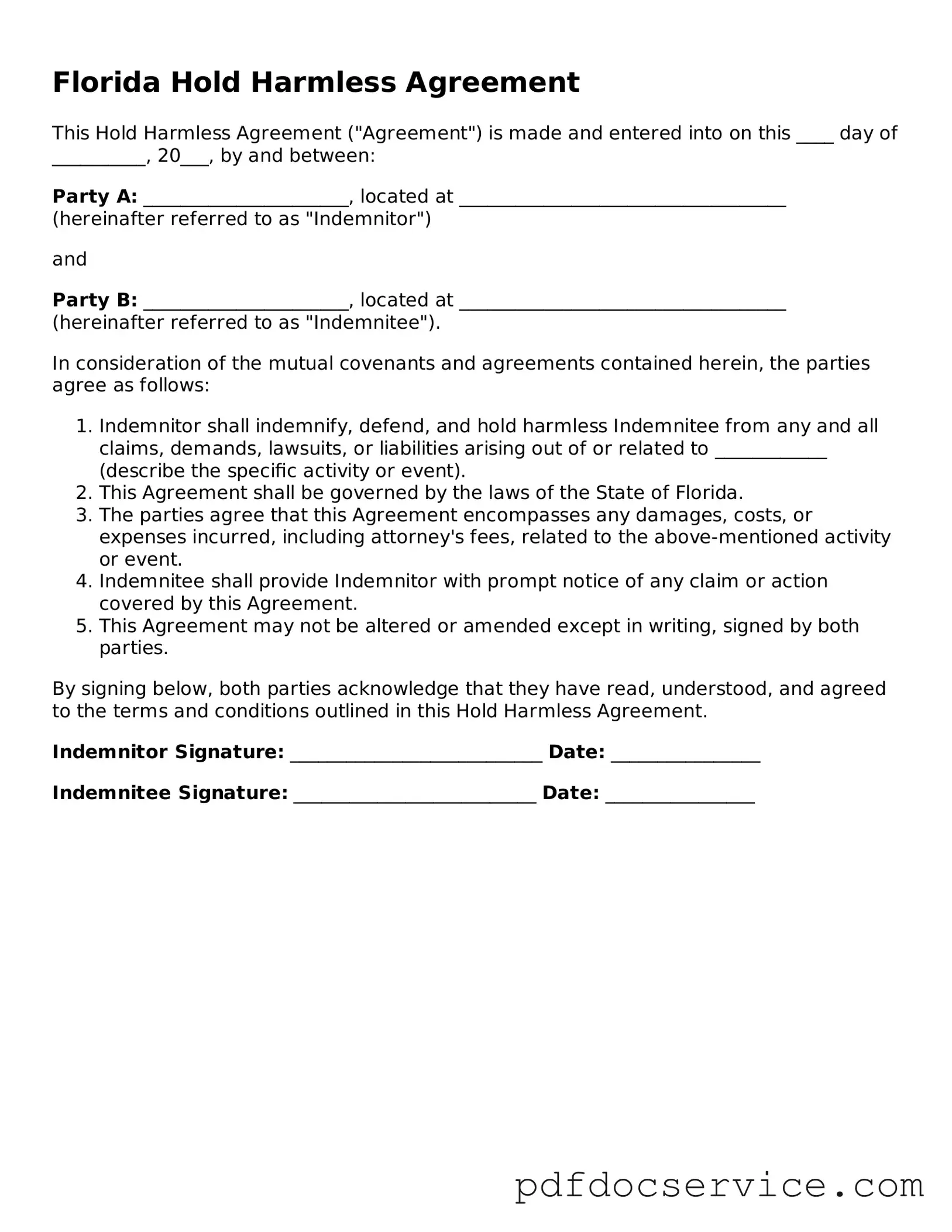What is a Florida Hold Harmless Agreement?
A Florida Hold Harmless Agreement is a legal document that protects one party from liability for any injuries or damages that may occur during a specific activity or event. It is often used in contracts to ensure that one party does not hold the other responsible for certain risks.
Who typically uses a Hold Harmless Agreement in Florida?
This agreement is commonly used by businesses, property owners, and event organizers. For instance, contractors may require subcontractors to sign this agreement to limit their liability. Similarly, venues may ask event organizers to sign it to protect themselves from potential claims.
What are the main components of a Hold Harmless Agreement?
A typical Hold Harmless Agreement includes the following components:
-
Identification of Parties:
Clearly states who is involved in the agreement.
-
Description of the Activity:
Details the specific activity or event that the agreement covers.
-
Liability Waiver:
Outlines the extent to which one party agrees to hold the other harmless.
-
Signatures:
Requires signatures from all parties involved to make the agreement binding.
Is a Hold Harmless Agreement legally enforceable in Florida?
Yes, a Hold Harmless Agreement can be legally enforceable in Florida, provided it is written clearly and both parties understand its terms. However, courts may not enforce these agreements if they are deemed overly broad or if they attempt to waive liability for gross negligence or willful misconduct.
Can a Hold Harmless Agreement protect against all types of liability?
No, a Hold Harmless Agreement cannot protect against all types of liability. While it can limit liability for certain risks, it does not shield a party from gross negligence or intentional wrongdoing. Courts often scrutinize these agreements to ensure they are fair and reasonable.
How do I create a Hold Harmless Agreement in Florida?
To create a Hold Harmless Agreement, follow these steps:
-
Identify the parties involved.
-
Clearly describe the activity or event.
-
Outline the terms of the agreement, including the scope of liability.
-
Include a section for signatures and dates.
It may be beneficial to consult with a legal professional to ensure the agreement meets all necessary legal requirements.
Are there any specific laws governing Hold Harmless Agreements in Florida?
Florida does not have specific laws that govern Hold Harmless Agreements. However, general contract law applies. It is important to ensure that the agreement complies with state laws and does not violate public policy.
What should I consider before signing a Hold Harmless Agreement?
Before signing a Hold Harmless Agreement, consider the following:
-
The specific risks associated with the activity.
-
Your own insurance coverage and whether it is adequate.
-
The reputation and financial stability of the other party.
Understanding the implications of the agreement is crucial before committing to it.
Can a Hold Harmless Agreement be revoked?
Generally, a Hold Harmless Agreement can only be revoked if both parties agree to the change. If one party wants to terminate the agreement, they should discuss it with the other party and document any changes in writing.
Where can I find a template for a Florida Hold Harmless Agreement?
Templates for Hold Harmless Agreements can often be found online through legal websites or document services. However, it is advisable to have any template reviewed by a legal professional to ensure it meets your specific needs and complies with Florida law.
